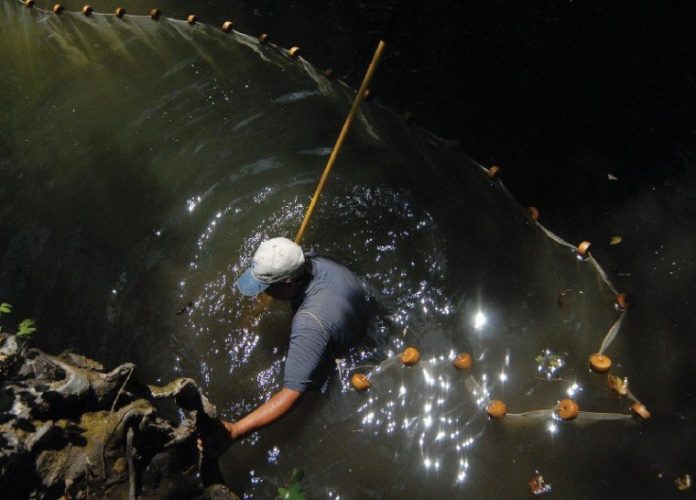
In nature every change creates a domino effect. So when local
streams dried far sooner than in past years, young trouts that
depended on them for support began to rapidly die.
By Serry shirley Staff Writer
Gilroy – In nature every change creates a domino effect. So when local streams dried far sooner than in past years, young trouts that depended on them for support began to rapidly die. Fortunately for them, a local group of benefactors stepped in to curb nature’s way, hauling the fish upstream in water tanks to water spots that will last the scorching summer.
Last week, 280 steelhead trout, most young frys, were rescued from the rapidly receding pools of water in west Gilroy’s Little Arthur Creek by four volunteers under the direction of Herman Garcia, 60, co-founder of local nonprofit Coastal Habitat Education and Environmental Restoration.
Together, the volunteers are filling in where nature has ceased to work because of impediments – human development – and an untimely dry season.
They dredged shallow pools with nets to corral the threatened fish to the bank where buckets awaited to take them up to a large oxygenated water tank in a nearby pickup. Since August 2006, the group has recovered 810 steelhead and relocated them upstream to areas that will sustain them through the warm season.
“Today is supposed to be in the 90s so the water will dry out and these fish are in imminent danger of dying,” Garcia said. The scenery is pretty but as work conditions go, the creek is less than hospitable.
The brush gets thick and tall and mingled with poison oak – to which three of the four volunteers are allergic – while mosquitos, spiders, ticks and the occasional rattlesnake lurk. The water, or what is left of it, is often swampy and home to flesh-eating beetles that get caught up in the volunteers’ nets.
None of that has stopped Raul Rivas, 54, from regularly giving his time to the creek he used to enjoy fishing in as a teen. He said he has witnessed the slow degradation of the fish population, which used to include full-grown steelhead and catfish.
The warning signs that something has gone awry are everywhere.
Last year, Little Arthur Creek’s waterflow dried up in August, forming pools and stranding fish. This year, Garcia said the historically low rainfall contributed to disconnecting waterflow by May, three months earlier than normal.
Jon Ambrose, a marine biologist with the National Marine Fishery Service who works closely with Garcia, estimated that whereas 6,000 adult steelhead trout used to come up to the local watershed to breed in the 1960s, today only about 200 remain.
“Steelhead, of all the salmon species, can tolerate a wider range on environmental conditions,” Ambrose said. “That is a sign that you have some serious water quality issues, the conditions for the fish in your stream are very degraded.”
If it takes a community to fix the creek and save the fish it’s because it took a wide variety of human activity to threaten the trouts in the first place.
Dams and concrete water channels limit flow and threaten the natural fish habitat. Uvas Creek – also a steelhead tributary to the Pajaro River – is drying out because of the combination of dry weather and Uvas Dam. Trash left behind by people and pollutants dumped by businesses as well as erosion and silt runoff from construction projects are all to blame, CHEER members say.
“It has really become an urbanized watershed,” said Michael Powell, the group’s environmental science director. “Nobody has the interest of fish, they are not really considered.”
Perry Shirley is a news intern and currently attends San Francisco State University. He can be reached at 842-9404, or ps******@**********rs.com












